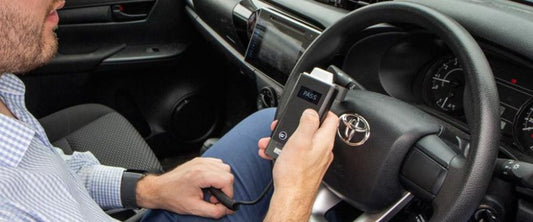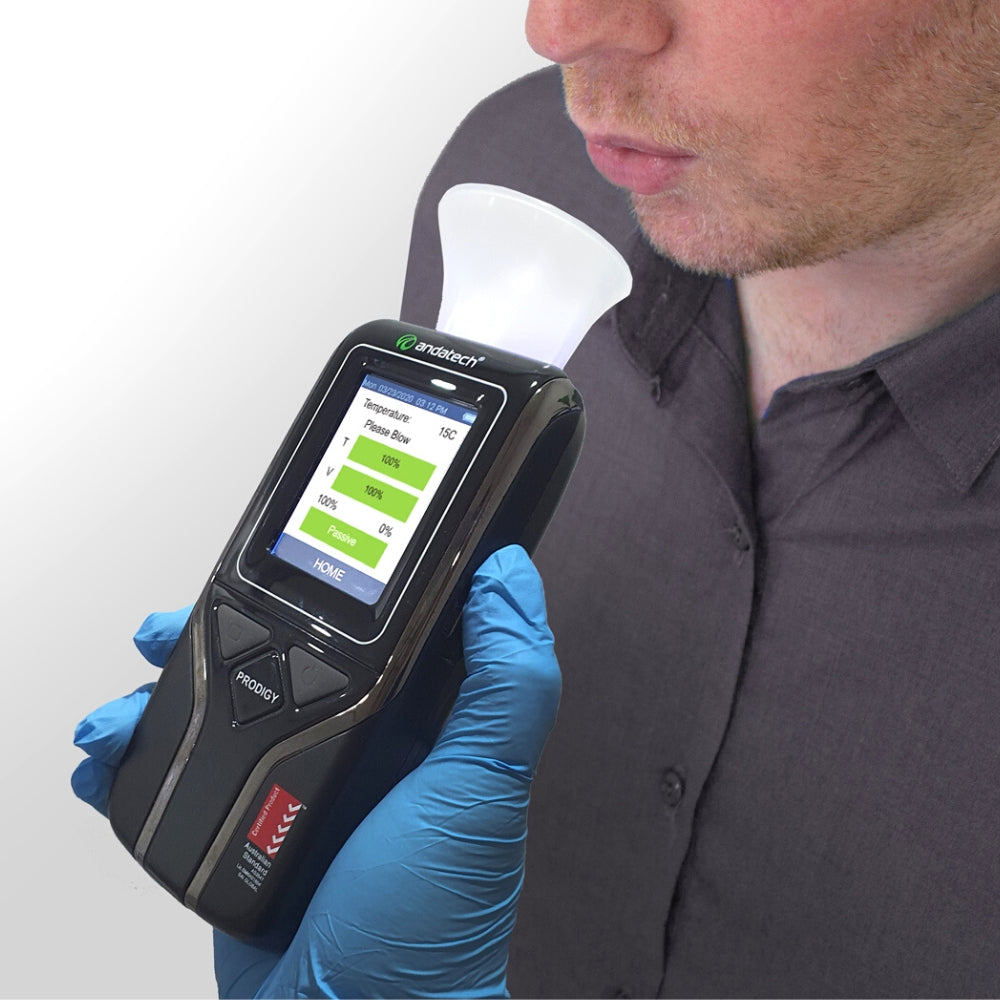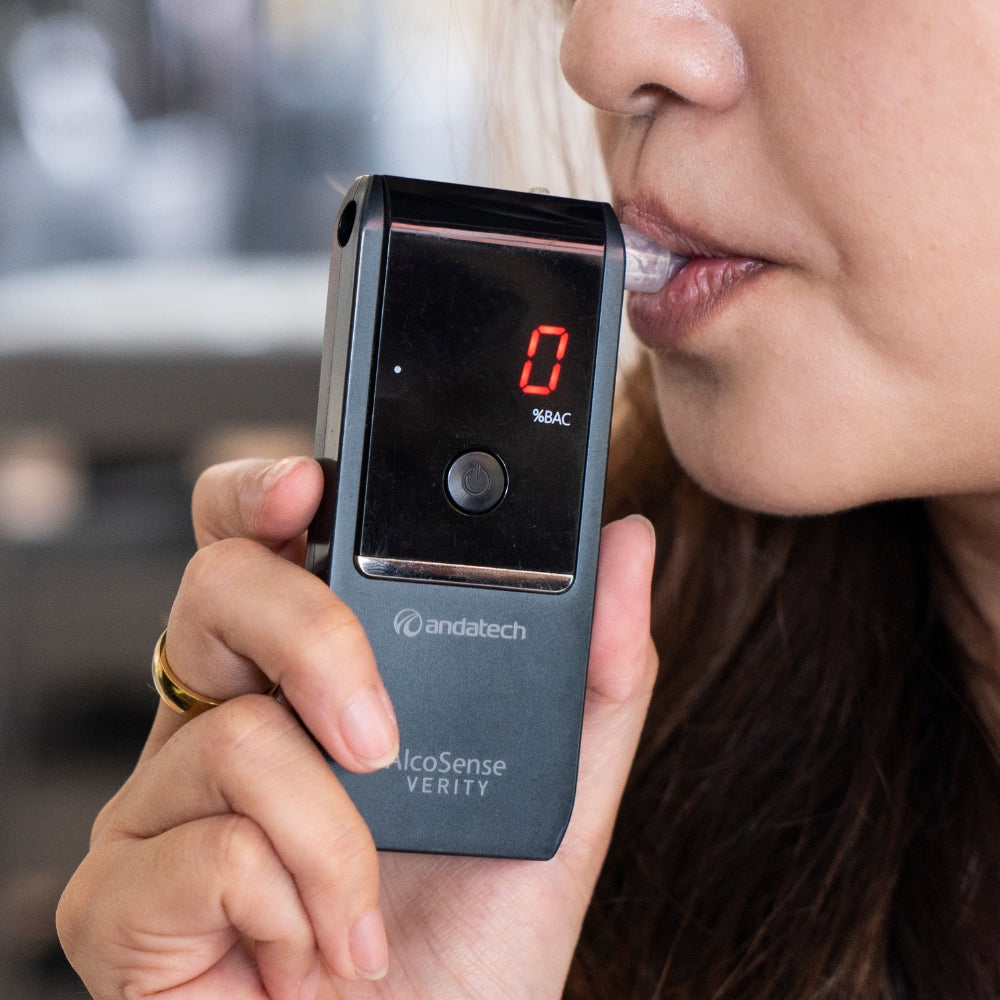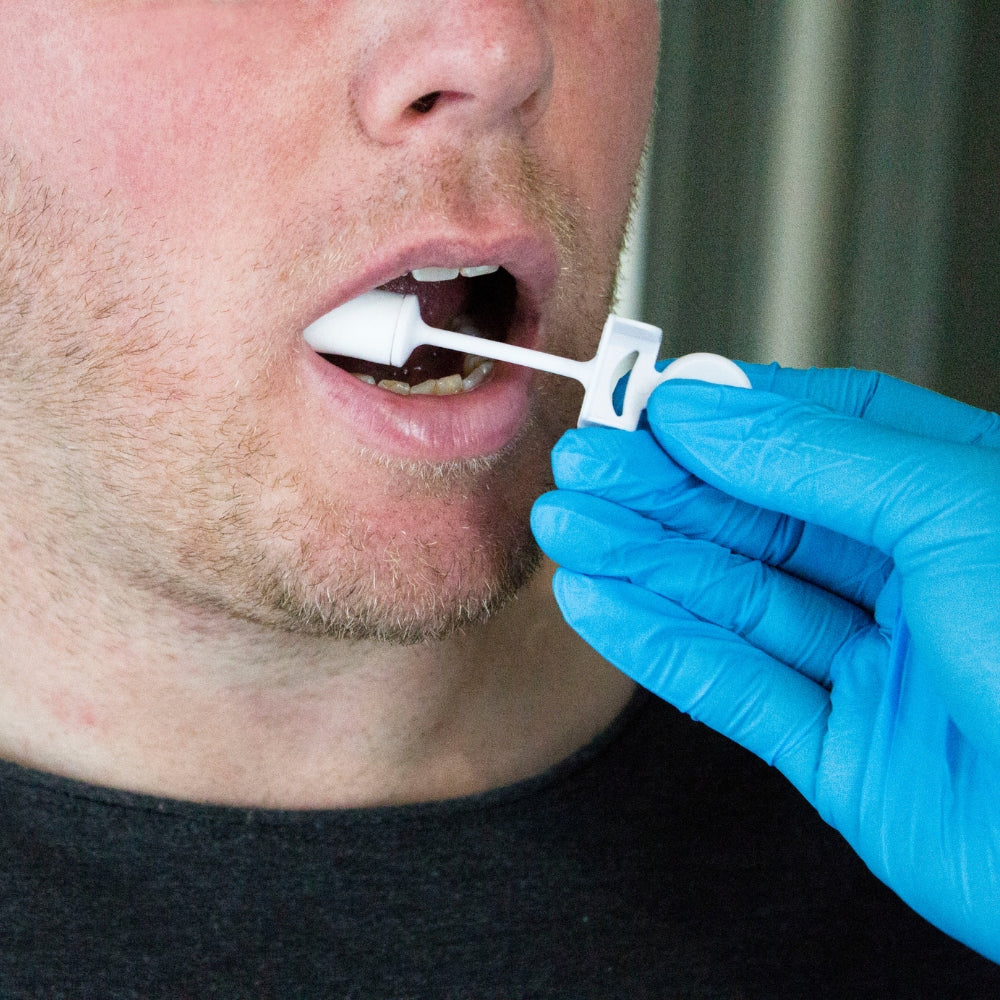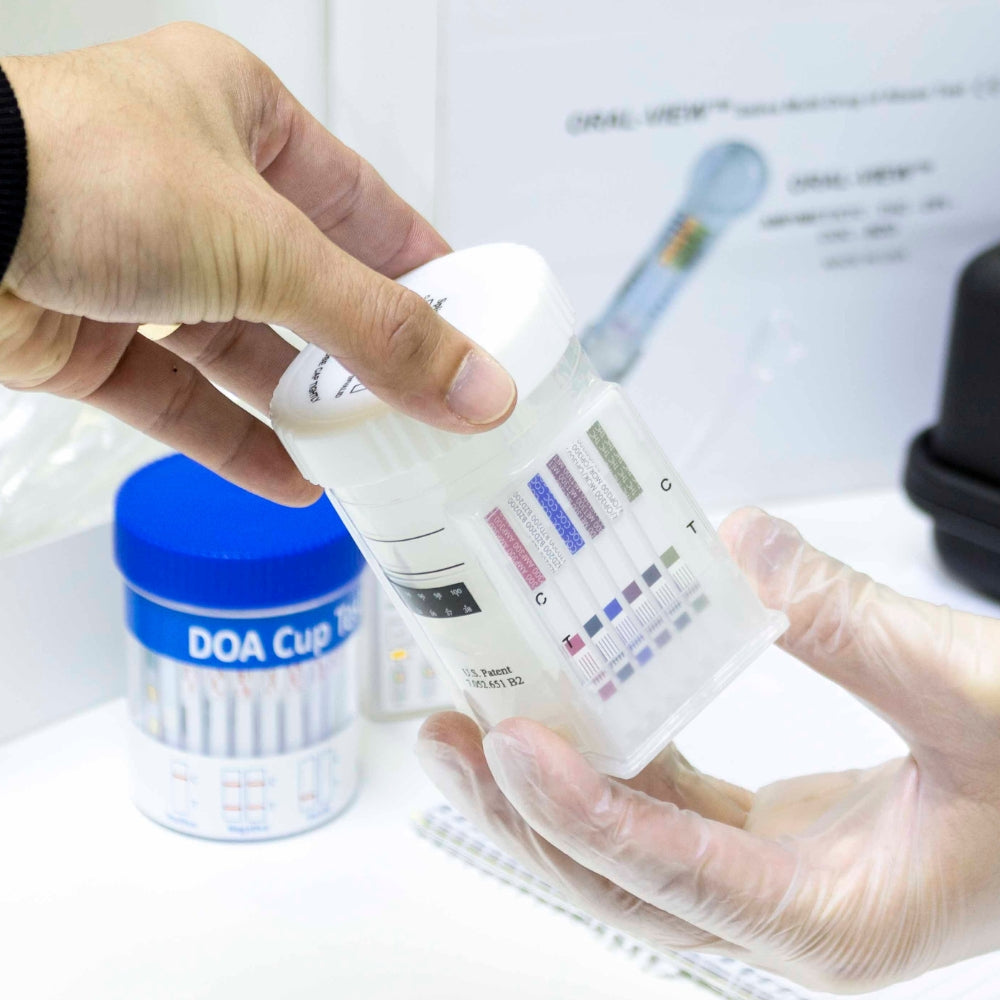Alcohol breath tester readings – especially during a random alcohol breath test – are every drink driver’s worst nightmare. Not only is your journey disrupted, but you may also end up incurring a huge fine, jail time or possibly, losing your driving license.
Even if you’re not a drink driver (in that you don’t drive right after drinking), many of us forget that we could still blow over the legal limit the next morning or the day after a night out drinking. That is why an alcohol breath test the day after drinking is still important to ensure that alcohol has completely left your system before you get behind the wheel.
We have compiled a little guide on alcohol breath tester readings to help you get up to speed on what alcohol tester readings mean, alcohol breath tests in Australia, as well as the various offences that you may be liable for when you exceed a certain prescribed alcohol limit.

What is an alcohol breath test?
An alcohol breath test uses your breath sample (more specifically, your lung air sample) to determine the concentration of alcohol in your body. This concentration is an indication of the blood alcohol content, abbreviated as BAC. The alcohol breath tester readings obtained from the test are subsequently used to determine whether your blood alcohol content is above or below the prescribed Australian Blood Alcohol Limit of 0.05%.
Random alcohol breath tests are regularly carried out by law enforcement to test drivers’ alcohol levels. Typically, an alcohol breath tester, or breathalyser is used to obtain your breath sample and convert that into a reading.
Understanding blood alcohol content
The Blood Alcohol Content (BAC) is the standard measurement used in the alcohol breath tester readings. In layman’s terms, the BAC is simply the amount of alcohol that is in a person’s bloodstream. Empirically, through the approved testing devices, this is measured in mass per volume.
If the BAC reading is 0.05%, for example, it means you have 0.05 grams of alcohol for every 100 grams of blood. The higher the BAC reading, the higher the state of inebriation a person is in and it is highly likely that they will have a degree of impairment that is likely to lead to an accident.
There is a scientific threshold for blood alcohol concentration beyond which a person begins to exhibit signs of “impairment” such as slurred speech and impairment of the memory, coordination functions and attention. This threshold is a BAC of 0.05%.
However, your BAC is not just influenced by the number of bottles of alcohol you’ve consumed. Other factors affecting BAC also come into play such as age, gender, genetics, food consumed before drinking, and your body weight.

How do breathalysers work?
When you drink alcohol, it is absorbed into your bloodstream through your digestive system. However, alcohol is also volatile, so some of the alcohol will move into the air sac membranes (alveoli) in the lungs when your “alcohol-soaked” blood flows through the lungs.
When you exhale the alcohol in the air sac membranes (which is what police ask you to do when carrying out a breath test), it will be detected by the alcohol breath tester. Since the alcohol content in the air sac membranes is directly proportional to the alcohol in the bloodstream, alcohol breath testers can then measure the amount of alcohol in the bloodstream with a high degree of accuracy by analysing the amount of alcohol that is exhaled into the device.
Factors affecting the accuracy of the alcohol breath tester readings
What is a high breathalyzer rating? Well, in Australia, you will be presumed to be legally intoxicated if you have a blood alcohol content (BAC) of 0.05%, which is the legal drink driving limit in the country. However, in spite of 60 years of design improvements in testing device technology, alcohol breath tester readings may still not be 100% accurate. That is why the breathalyser tests are not generally admissible in court.
There are several factors that may impact the accuracy of the testing device:-
- Breathalyser Calibration: To maintain a high degree of accuracy, it is prudent to calibrate breathalyzers periodically. Law enforcement breathalyzers must be calibrated as frequently as daily or weekly because they are used for testing high volumes of people so regularly.
- Human Error: Alcohol breath testers are fairly easy to use but basic human errors can also affect the accuracy of the results, such as not blowing enough air or not waiting 20 minutes before the last drink (this causes the breathalyzer to only read mouth alcohol levels which will be significantly higher, not lung alcohol which are a more reliable representation of your BAC).
- Environmental Factors: Various environmental or external factors such as strong winds, chemicals or fumes in the vicinity may distort breathalyzer readings.
- Foreign Substances in the Mouth: If there are foreign substances in the mouth that contain alcohol such as breath fresheners or mouthwash, they are likely to impact the alcohol breath tester readings and give false positives (in semiconductor breathalysers only).
- Sensor Technology: Alcohol breath testers are designed with different kinds of technologies and the accuracy of these varies. The most accurate are generally those that use fuel cell sensor technology. Fuel cell technology provide more stable readings and are alcohol-specific, so they detect and analyse only ethyl alcohol, not other types of alcohol from breath fresheners or mouthwash.

Australian drink driving laws
Any driver caught by police with an alcohol breath tester reading of 0.05%BAC or more will face a Prescribed Concentration of Alcohol (PCA) charge.
The PCA charges can vary from the low range charges to high range charges. The severity of the penalty will depend on your BAC level, and whether you are a first offender or a repeat offender. Penalties typically include a hefty fine, automatic license disqualification and even imprisonment for heavier or repeat offences. These penalties vary from state to state.
However, an alcohol breath tester is not always needed for a police officer to detect drink drivers. Drink drivers can also face a Driving While Intoxicated (DWI) charge, which simply means that you have so much alcohol in your bloodstream that you are unable to exercise control over the vehicle that you are driving.
To be convicted of a DWI, a police officer looks at certain things-
- Did they witness the vehicle swerving dangerously?
- Does the driver have impaired and slurred speech?
- Was the median of the road crossed?
- Can the driver stand still?
- Does the strong aroma of alcohol linger in the breath?
In these cases where the driver is clearly displaying symptoms of impairment, a breathalyzer isn’t always necessary to convict. The observations of an officer may be enough to convict of DWI.
You could avoid all these by arming yourself with an alcohol breath tester before you drive, especially the morning after. Breathalyzers have grown increasingly popular over the past few years as the technology has improved considerably while prices have gone down. As a result, carrying an alcohol breath tester is no longer just the domain of traffic cops.
Many consumers are buying alcohol breath testers for personal use, not just to avoid arrest but to keep themselves within the limits when they are planning to drink and drive. Some consumer breathalyzers are highly portable and have the same efficacy as the professional-grade alcohol breath testers that are normally used by law enforcement officials.
These qualities, along with relatively low pricing makes them highly attractive for conscientious buyers who want to monitor their blood alcohol content. Alcohol normally stays in the system for a longer duration of time so remember to use the breathalyzers the following day before you hit the road.
Disclaimer: The information provided in this article is for general reference only. Please seek advice from professionals according to your business’s needs.
Written by Jaka Exstrada





